Why Trust Gadgetbyte?
At Gadgetbyte, we invest substantial hours into rigorously testing each product or service we review, guaranteeing that you make informed purchases. Learn more about our testing process.
Review Overview
Xiaomi Redmi 5A
7/10
Xiaomi Redmi Note 5A
7/10
Xiaomi Redmi 4X
7/10
Xiaomi Redmi 5
8/10
Xiaomi Redmi Note 5A Prime
7/10
Xiaomi Redmi 5 Plus
8/10
Xiaomi Redmi 6A
9/10
Xiaomi Redmi 6
9/10
Xiaomi MI A2 Lite
9/10
Xiaomi Redmi S2
8/10
Xiaomi Redmi Note 5 AI
9/10
Xiaomi MI A2
9/10
Xiaomi is one of the most popular smartphone brands right now. It focuses on making smartphones with a good build quality and a reliable software experience. However, Xiaomi has been known to price its devices a little higher as compared to the pricing in other countries. Nonetheless, the company has done a good job selling quality devices at all price range available.
Xiaomi: Brand Overview
The Chinese tech brand Xiaomi emerged by producing smartphones with superior specs for an honest price. The company has been expanding its horizon into an absolute electronic hub. With the usual production of smartphones, the company has been focusing on bringing devices and other accessories like Mi TV, Mi fitness bands, Mi Air Purifier, etc.Currently, there are two official distributors of Xiaomi phones in Nepal: Vatsal Impex Pvt. Ltd. and Teledirect Pvt. Ltd. The area of work has been divided between these two distributors. Vatsal Impex serves the customers inside the Kathmandu Valley, whereas Teledirect will look after the sales and provide services to customers outside the valley.Hence, if you are buying a Xiaomi smartphone in Nepal, make sure you buy from an authorized distributor. To know if your product is authorized or not, there's a hologram of one of the distributors in the box package.Xiaomi Mobile Price in Nepal 2023 [Summary]
| Xiaomi Mobiles List | Price in Nepal (Official) |
| Redmi A1 | रू 11,999 (2+32GB) |
| Redmi A1+ | रू 12,499 (2+32GB) |
| रू 13,999 (3+32GB) | |
| Redmi A2 | रू 10,499 (2+32GB) |
| Redmi A2+ | रू 11,499 (2+32GB) |
| रू 11,999 (3+64GB) | |
| Redmi 10 Prime 2022 | रू 20,499 (4+64GB) |
| रू 23,999 (6+128GB) | |
| Redmi 12C | रू 14,499 12,999 (4/64GB) |
| रू 16,999 15,999 (6/128GB) | |
| Redmi 13C | रू 15,999 (6/128GB) |
| रू 18,999 (8/256GB) | |
| Redmi 12 | रू 17,999 (6/128GB) |
| रू 20,999 (8/256GB) | |
| Redmi Note 12 4G | रू 22,999 (4+128GB) |
| रू 24,999 (6+128GB) | |
| रू 26,999 (8+128GB) | |
| रू 27,999 (8+256GB) | |
| Redmi Note 13 4G | रू 24,999 (6+128GB) |
| रू 27,999 (8+256GB) | |
| Redmi Note 12 5G | रू 29,999 (6+128GB) |
| रू 31,999 (8+256GB) | |
| Redmi Note 13 Pro 4G | रू 34,999 (8+256GB) |
| रू 39,999 (12+256GB) | |
| Redmi Note 12 Pro 5G | रू 38,999 (6+128GB) |
| रू 41,999 (8+256GB) | |
| Redmi Note 13 Pro+ 5G | रू 47,999 (8+256GB) |
| रू 52,999 (12/512GB) | |
| Xiaomi 13 Lite | रू 54,999 (8+128GB) |
| रू 57,999 (8+256GB) | |
| Xiaomi 12X | रू 76,999 71,999 (8+256GB) |
| Xiaomi 12 | रू 92,999 87,999 (8+256GB) |
| Xiaomi 13 Pro | रू 129,999 (12+256GB) |
1. Redmi A1

Redmi A1 Specifications:
- Display: 6.52-inch IPS LCD, HD+, 60Hz refresh rate
- Chipset: MediaTek Helio A22 4G (12nm mobile platform)
- Memory: 2GB RAM, 32GB storage (expandable)
- Software & UI: Android 12 (Go Edition)
- Rear Camera: Dual (8MP main, depth sensor)
- Front Camera: 5MP sensor (teardrop notch)
- Security: No fingerprint sensor
- Battery: 5000mAh with 10W charging
- Price in Nepal: Rs. 11,999 (2/32GB)
- target="_blank" rel="noopener">Watch our Redmi A1 review
2. Redmi A1+

Redmi A1+ Specifications:
- Display: 6.52-inch IPS LCD, HD+, 60Hz refresh rate
- Chipset: MediaTek Helio A22 4G (12nm mobile platform)
- Memory: 2GB RAM, 32GB storage (expandable)
- Software & UI: Android 12 (Go Edition)
- Rear Camera: Dual (8MP main, depth sensor)
- Front Camera: 5MP sensor (teardrop notch)
- Security: Fingerprint sensor (rear-mounted)
- Battery: 5000mAh with 10W charging
- Price in Nepal: Rs. 12,499 (2/32GB) | Rs. 13,999 (3/32GB)
3. Redmi A2
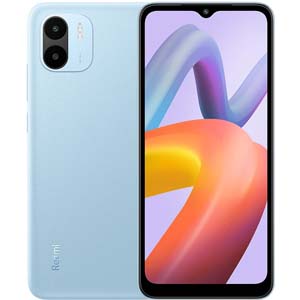
Redmi A2 is the successor to last year’s A1. The biggest upgrade it brings is in the performance department. While the A1 was powered by a quad-core A22 chip, the A2 brings the new Helio G36 with double the CPU cores.
This is paired with up to 3GB of LPDDR4X RAM and 32GB of eMMC 5.1 storage. It runs on Android 12 Go Edition.
Other specs are similar to its predecessor including the 6.52-inch LCD screen, 8MP dual camera, and large 50,000mAh battery.
Redmi A2 Specifications:
- Display: 6.52-inch LCD panel, HD+ resolution
- Chipset: MediaTek Helio G36 4G (12nm)
- Memory: 2/3GB LPDDR4X
- Storage: 32GB eMMC 5.1 (expandable up to 1TB)
- Software & UI: Android 13 Go-Edition
- Rear Camera: Dual (8MP primary + Depth sensor)
- Front Camera: 5MP f/2.2 (water-drop)
- Battery: 5000mAh with 10W Charging
- Price in Nepal: Rs. 10,499 (2/32GB), Free Redmi Earphones
4. Redmi A2+

Redmi A2+ is a slightly more expensive version of the vanilla A2. For the added price, you get a dedicated fingerprint scanner for biometrics. It is located at the back of the device which has a leather-like texture.Compared to its predecessor, it is powered by a more capable Helio G36 chip, paired with up to 3GB RAM and 65GB storage. It also runs on Android 13 Go Edition. This is fueled by a 5,000mAh battery
It sports the same 6.52-inch HD screen, Helio G36 chip, 8MP dual camera, and a 5000mAh battery.
Redmi A2+ Specifications:
- Display: 6.52-inch LCD panel, HD+ resolution
- Chipset: MediaTek Helio G36 4G (12nm)
- Memory: 2/3GB LPDDR4X
- Storage: 32/64GB eMMC 5.1 (expandable up to 1TB)
- Software & UI: Android 13 Go-Edition
- Rear Camera: Dual (8MP primary + Depth sensor)
- Front Camera: 5MP f/2.2 (water-drop)
- Biometrics: Rear-mounted fingerprint scanner
- Battery: 5000mAh with 10W Charging
- Price in Nepal: Rs. 11,499 (2/32GB) | Rs. 11,999 (3/64GB), Free Redmi Earphones
5. Redmi 10 Prime 2022
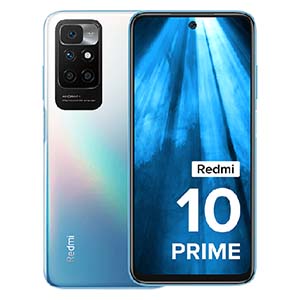
Redmi 10 Prime 2022 Specifications:
- Display: 6.5-inch IPS LCD, FHD+, 90Hz refresh rate
- Chipset: MediaTek Helio G88 4G (12nm mobile platform)
- Memory: 4/6GB RAM, 64/128GB storage (expandable)
- Software & UI: MIUI 12.5 on top of Android 11
- Rear Camera: Quad (50MP main, 8MP ultrawide, 2MP macro, 2MP depth)
- Front Camera: 8MP sensor (hole-punch cutout)
- Security: Fingerprint sensor (side-mounted)
- Battery: 6000mAh with 18W charging
- Price in Nepal: Rs. 20,499 (4/64GB) | Rs. 23,999 (6/128GB)
6. Redmi 12C

Redmi 12C Specifications:
- Display: 6.71-inch IPS LCD, HD+, 60Hz refresh rate
- Chipset: MediaTek Helio G85 4G (12nm mobile platform)
- Memory: 3/4/6GB RAM, 32/64/128GB storage (expandable)
- Software & UI: MIUI 13 on top of Android 12
- Rear Camera: Dual (50MP main, depth)
- Front Camera: 5MP sensor (teardrop notch)
- Security: Fingerprint sensor (rear-mounted)
- Battery: 5000mAh with 10W charging
- Price in Nepal: Rs.
14,49912,999 (4/64GB) | Rs.16,99915,999 (6/128GB)
7. Redmi 13C
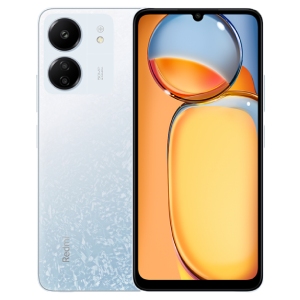
Redmi 13C Specifications:
- Display: 6.74-inch IPS LCD, HD+, 90Hz refresh rate
- Chipset: MediaTek Helio G85 4G (12nm mobile platform)
- Memory: 6/8GB RAM, 128/256GB storage (expandable)
- Software & UI: MIUI 14 on top of Android 13
- Rear Camera: Triple (50MP main, 2MP macro, AI lens)
- Front Camera: 8MP sensor (teardrop notch)
- Security: Fingerprint sensor (rear-mounted)
- Battery: 5000mAh with 18W fast charging support
- Price in Nepal: Rs. 15,999 (6/128GB) | Rs. 18,999 (8/256GB)
8. Redmi 12
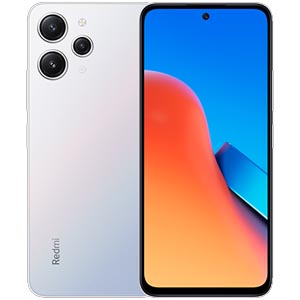
The main selling point of the Redmi 12 is its design. Despite being a budget phone it sports a glass back that makes it feel more premium than other phones in this segment. The body measures 8.17mm in thickness and weighs around 199 grams.
Over on the front, it sports a 6.79-inch IPS screen with a 90Hz refresh rate. Powering the phone is the MediaTek Helio G88 chip, paired with up to 8GB RAM and 256GB storage.
Photography-wise, Redmi 12 features a triple camera setup consisting of a 50MP primary, 8MP ultrawide, and a 2MP macro sensor. Likewise, it sports an 8MP selfie shooter. Fueling the phone is a 5000mAh battery which supports 18W fast charging.
Redmi 12 Specifications:
- Display: 6.79-inch FHD+ IPS LCD, 90Hz refresh rate
- Chipset: MediaTek Helio G88 4G (12nm)
- Memory: 4/8GB RAM, 128/256GB storage (expandable)
- Software & UI: Android 13 with MIUI 14 on top
- Rear Camera: Triple (50MP main, 8MP ultrawide, 2MP macro)
- Front Camera: 8MP (hole-punch cutout)
- Battery: 5000mAh with 18W charging
- Security: Side-mounted fingerprint sensor, 2D Face unlock
- Price in Nepal: Rs. 17,999 (6/128GB) | Rs. 20,999 (8/256GB)
9. Redmi Note 12 4G
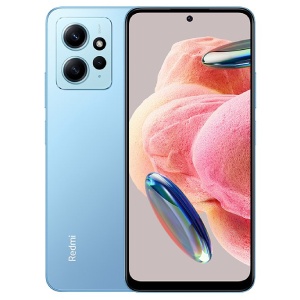
Redmi Note 12 4G Specifications:
- Display: 6.67-inch AMOLED, FHD+, 120Hz refresh rate
- Chipset: Qualcomm Snapdragon 685 4G (6nm mobile platform)
- Memory: 4/6/8GB RAM, 128GB storage (expandable)
- Software & UI: MIUI 14 on top of Android 13
- Rear Camera: Triple (50MP primary, 8MP ultrawide, 2MP macro)
- Front Camera: 13MP sensor (hole-punch cutout)
- Security: Fingerprint sensor (side-mounted)
- Battery: 5000mAh with 33W fast charging
- Price in Nepal: Rs. 22,999 (4/128GB) | Rs. 24,999 (6/128GB) | Rs. 26,999 (8/128GB) | Rs. 27,999 (8/256GB)
10. Redmi Note 13 4G
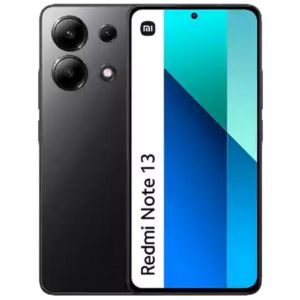
Redmi Note 13 4G Specifications:
- Display: 6.67-inch AMOLED, FHD+, 120Hz refresh rate
- Chipset: Qualcomm Snapdragon 685 4G (6nm mobile platform)
- Memory: 6/8GB RAM, 128/256GB storage (expandable)
- Software & UI: MIUI 14 on top of Android 13
- Rear Camera: Triple (108MP primary, 8MP ultrawide, 2MP macro)
- Front Camera: 16MP sensor (hole-punch cutout)
- Security: Fingerprint sensor (indisplay)
- Battery: 5000mAh with 33W fast charging
- Price in Nepal: Rs. 24,999 (6/128GB) | Rs. 27,999 (8/256GB)
11. Redmi Note 12 5G

Redmi Note 12 5G Specifications:
- Display: 6.67-inch AMOLED, FHD+, 120Hz refresh rate
- Chipset: Qualcomm Snapdragon 4 Gen 1 5G (6nm mobile platform)
- Memory: 4/6/8GB RAM, 128/256GB storage (expandable)
- Software & UI: MIUI 14 on top of Android 12
- Rear Camera: Triple (48MP primary, 8MP ultrawide, 2MP macro)
- Front Camera: 13MP sensor (hole-punch cutout)
- Security: Fingerprint sensor (side-mounted)
- Battery: 5000mAh with 33W fast charging
- Price in Nepal: Rs. 29,999 (6/128GB) | Rs. 31,999 (8/256GB)
- Read our Redmi Note 12 5G review
- target="_blank" rel="noopener">Watch our Redmi Note 12 5G review
12. Redmi Note 13 Pro 4G
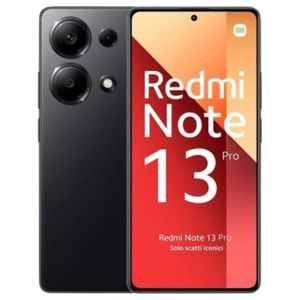
Redmi Note 13 Pro 4G Specifications:
- Display: 6.67-inch AMOLED, FHD+, 120Hz refresh rate
- Chipset: MediaTek Helio G99 Ultra 4G (6nm mobile platform)
- Memory: 8/12GB RAM, 256/512GB storage (fixed)
- Software & UI: MIUI 14 on top of Android 13
- Rear Camera: Triple (200MP main, 8MP ultrawide, 2MP macro)
- Front Camera: 16MP sensor (hole-punch cutout)
- Security: Fingerprint sensor (indisplay-mounted)
- Battery: 5000mAh with 67W fast charging
- Price in Nepal: Rs. 34,999 (8/256GB) | Rs. 39,999 (12/512GB)
13. Redmi Note 12 Pro 5G
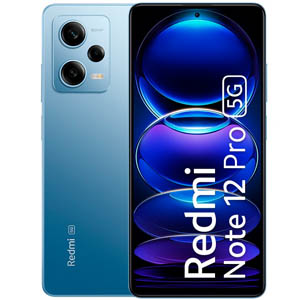
The Note 12 Pro is among the best mid-range smartphones of 2023. This is among the first phones to pack the MediaTek Dimensity 1080 chips built on TSMC’s 6nm process. Xiaomi has paired it up to 12GB of LPDDRX RAM and 256GB of UFS 2.2 storage. Feuling the phone is a 5,000mAh battery that charges via a 67W charging.
The phone sports a 120Hz OLED screen with a circular cutout for the 16MP selfie camera. At the back, it flaunts a triple camera setup consisting of a 50MP primary camera with OIS, 8MP ultrawide, and a 2MP sensor.
Redmi Note 12 Pro 5G Specifications:
- Display: 6.67-inch AMOLED, FHD+, 120Hz refresh rate
- Chipset: MediaTek Dimensity 1080 5G (6nm mobile platform)
- Memory: 6/8/12GB RAM, 128/256GB storage (fixed)
- Software & UI: MIUI 13 on top of Android 12
- Rear Camera: Triple (50MP main, 8MP ultrawide, 2MP macro)
- Front Camera: 16MP sensor (hole-punch cutout)
- Security: Fingerprint sensor (side-mounted)
- Battery: 5000mAh with 67W fast charging
- Price in Nepal: Rs. 38,999 (6/128GB) | Rs. 41,999 (8/256GB)
- target="_blank" rel="noopener">Read our Redmi Note 12 Pro 5G review
- target="_blank" rel="noopener">Watch our Redmi Note 12 Pro 5G review
14. Redmi Note 13 Pro+ 5G
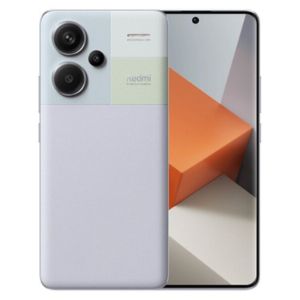
Redmi Note 13 Pro+ 5G Specifications:
- Display: 6.67-inch AMOLED, FHD+, 120Hz refresh rate
- Chipset: MediaTek Dimensity 7200 Ultra 5G (4nm mobile platform)
- Memory: 8/12GB RAM, 256/512GB storage (fixed)
- Software & UI: MIUI 14 on top of Android 13
- Rear Camera: Triple (200MP main OIS, 8MP ultrawide, 2MP macro)
- Front Camera: 16MP sensor (hole-punch cutout)
- Security: Fingerprint sensor (indisplay)
- Battery: 5000mAh with 120W fast charging
- Price in Nepal: Rs. 47,999 (8/256GB) | Rs. 52,999 (12/512GB)
15. Xiaomi 13 Lite
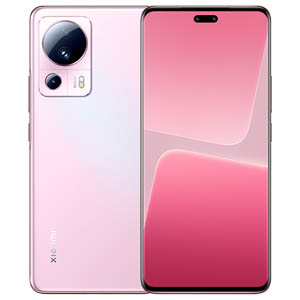
Xiaomi 13 Lite Specifications:
- Display: 6.55-inch AMOLED panel, FHD+, 120Hz refresh rate
- Chipset: Qualcomm Snapdragon 7 Gen 1 5G (4nm mobile platform)
- Memory: 8GB RAM, 128/256GB storage (fixed)
- Software & UI: MIUI 14 on top of Android 12
- Rear Camera: Triple (50MP main, 8MP ultrawide, 2MP macro)
- Front Camera: Dual (32MP main, 8MP depth)
- Security: Fingerprint sensor (optical in-display)
- Battery: 4500mAh with 67W fast charging
- Price in Nepal: Rs. 54,999 (8+128GB) | Rs. 57,999 (8+256GB)
- Read our Xiaomi 13 Lite review
- target="_blank" rel="noopener">Watch our Xiaomi 13 Lite review
16. Xiaomi 12X
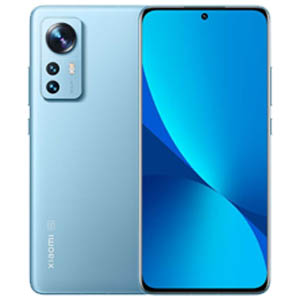
Xiaomi 12X Specifications:
- Display: 6.28-inch AMOLED, FHD+, 120Hz refresh rate
- Chipset: Qualcomm Snapdragon 870 5G (7nm mobile platform)
- Memory: 8/12GB RAM, 128/256GB storage (fixed)
- Software & UI: MIUI 13 on top of Android 12
- Rear Camera: Triple (50MP main, 13MP ultrawide, 5MP telemacro)
- Front Camera: 32MP sensor (hole-punch cutout)
- Security: Fingerprint sensor (optical in-display)
- Battery: 4500mAh with 67W fast charging
- Price in Nepal: Rs. 71,999 (8/256GB)
- Read our Xiaomi 12X review
- target="_blank" rel="noopener">Watch our Xiaomi 12X review
17. Xiaomi 12
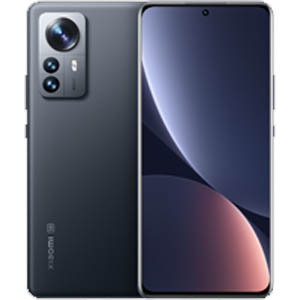
Xiaomi 12 Specifications:
- Display: 6.28-inch AMOLED panel, FHD+, 120Hz refresh rate
- Chipset: Qualcomm Snapdragon 8 Gen 1 5G (4nm mobile platform)
- Memory: 8/12GB RAM, 128/256GB storage (fixed)
- Software & UI: MIUI 13 on top of Android 12
- Rear Camera: Triple (50MP main, 13MP ultrawide, 5MP telemacro)
- Front Camera: 32MP sensor (hole-punch cutout)
- Security: Fingerprint sensor (optical in-display)
- Battery: 4500mAh with 67W fast charging
- Price in Nepal: Rs. 87,999 (8/256GB)
- Read our Xiaomi 12 review
- target="_blank" rel="noopener">Watch our Xiaomi 12 review
18. Xiaomi 13 Pro
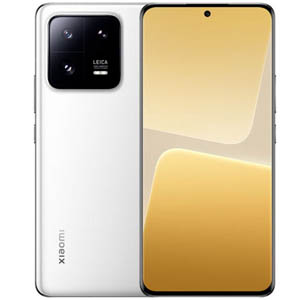
Xiaomi 13 Pro was announced at MWC as the company’s flagship smartphone for 2022. The phone is powered by a Snapdragon 8 Gen 2 processor built on the TSMC 4nm node. It is paired with LPDDR4X RAM and UFS 4.0 storage and backed by a 3400 sq. liquid-cooled vapor chamber. You get two more in-house co-processors — Surge P1 and Surge P2 for smart battery management for the 4820mAh cell.
That said, the main highlight of the Xiaomi 13 Pro is the camera. It brings a triple camera setup with Leica’s official branding and Master lenses. Headlining the setup is the 1-inch Sony IMX989 sensor. Finally, the phone sports a 6.73-inch QHD+ AMOLED screen with a variable refresh rate between 1Hz and 120Hz.
Xiaomi 13 Pro Specifications:
- Display: 6.73-inch AMOLED, WQHD+, 120Hz refresh rate
- Chipset: Qualcomm Snapdragon 8 Gen 2 5G (4nm mobile platform)
- Memory: 8/12GB RAM, 128/256/512GB storage (fixed)
- Software & UI: MIUI 14 on top of Android 13
- Rear Camera: Triple (50MP main, 50MP ultrawide, 50MP telephoto)
- Front Camera: 32MP sensor (hole-punch cutout)
- Security: Fingerprint sensor (optical in-display)
- Battery: 4820mAh with 120W fast charging
- Price in Nepal: Rs. 129,999 (12/256GB)
- Read our Xiaomi 13 Pro review
- target="_blank" rel="noopener">Watch our Xiaomi 13 Pro review
Conclusion
So, that completes our list of Xiaomi mobile prices in Nepal. As compared to India and China, the Xiaomi Nepal division has tried to keep the price as similar as possible. However, there is a slight price difference because of the 13% government VAT and an additional 2.5% excise duty on the import of mobile phones.
To say something about myself, I have been writing tech and gadgets from 2021. Although coming from a non technical studies background, I'm someone who is always fascinated by the latest gadget and tech innovations, circling around. Besides writing, you'll find me listening music and aligning the stars through astrology and sometimes even, tarot cards! 😉🧿
Comments
No comments yet. Add a comment to start a discussion
![Xiaomi Mobile Price in Nepal [Updated]](/_next/image?url=http%3A%2F%2F45.117.153.85%3A8002%2Fuploads%2Fmedias%2F2023%2F03%2FXiaomi-Mobile-Price-in-Nepal-March-2023-Update.jpg&w=1920&q=75)




